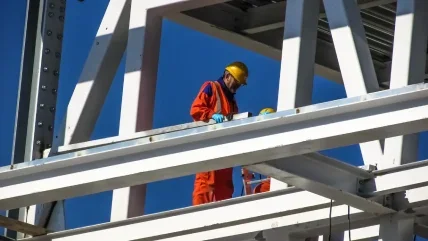
Dam safety is the most important requirement of any dam. The following basic safety principles should apply:
- All large dams must satisfy today’s safety criteria at any time.
- Old and new dams must satisfy the same minimum safety criteria, ie there is no difference in terms of safety for people living downstream of an old or a new dam.
It would be an ideal situation if these principles were followed everywhere. These principles may not be known, may not be followed or today’s safety criteria are not known. This applies in particular to the seismic safety
of dams.
There have been tailings dam failures in Brazil (Brumadinho, 2019 and Samarco Fundao mine, 2015), Australia (Cadia gold mine, 2015) and South Africa (Merriespruit, 1994) as well as a water dam in the US (Edenville dam, 2020), which failed almost instantaneously and it was concluded that most of these failures were due to static liquefaction. If this is true, then in the safety evaluations of these dam, the earthquake load case was not considered properly, as otherwise they would not have satisfied the seismic safety criteria and therefore would have had to be strengthened and/or decommissioned after rehabilitation. It was even speculated that some minor seismic events with magnitudes of less than three triggered the failure. If that were the case for any dam, then such dams have severe safety problems. The ICOLD Committee on Seismic Aspects of Dam Design has recommended carrying out seismic safety evaluations for all existing dams since 1999. Unfortunately, this has not been done in most of the above cases. I can only recommend very strongly that all dam owners or organisations in charge of dam safety should carry out such safety reviews without further delay.
I have also been involved in dam projects in the Himalayas and therefore followed closely recent dam failures that were reported from India. The first event was the rock-ice avalanche in the Chamoli district of Uttarakhand on 7 February 2021, which destroyed the Rishiganga barrage (13.2MW) and the downstream surface powerhouse and overtopped and severely damaged the Tapovan hydropower plant (520MW), which was under construction at the time of this incident. Other hydropower plants further downstream were also affected by the huge sediment transport.
Moreover, on 4 October 2023, when I was on a dam mission in nearby Bhutan (Figure 1), Teesta III hydropower project (1200 MW), comprising a 60m high concrete faced rockfill dam was washed away in less than about ten minutes due to overtopping by a glacial lake outflow flood (GLOF). This GLOF also caused damage to other hydropower plants along the Teesta River in Sikkim. The main lessons learnt from these two catastrophic events are:
Mass movements, GLOFs or the failure of dams created by landslides in the catchment of hydropower projects must be considered in the safety assessment of hydropower and storage dam projects.
Dams or barrages with a reservoir volume of the order of the volume of debris flows or GLOFs should not be built in such regions or if they are built, they must have an adequate reservoir volume and freeboard so that such catastrophic events can be absorbed safely by the reservoir.
Also landslides occurred very close to the Subansiri hydropower plant (2000MW) in Arunachal Pradesh in September and October 2023, which blocked the intakes of the diversion tunnels and heavy rainfall caused the collapse of retaining walls.
These geotechnical hazards may be triggered by heavy rainfall or earthquakes and slope stability failures in the reservoir region may also be due to the impounding of the reservoir. That the failure of diversion tunnels may have severe consequences was observed in Ituanga (2400MW) in 2018, where the blocking of the diversion tunnels when the 225m high rockfill dam was still under construction resulted in insured damages of the order of US$1 billion.
Abutment stability problems have severe consequences for arch dams. As a consequence of a large moving mass on the left abutment the height of Beauregard arch dam in Italy was reduced from 132m to 80m (Figure 2). I visited this dam when the demolition works were in progress and again in summer 2023 after the dam rehabilitation work was completed.
These recent incidents in the Himalayas and also the tailings dam failures that were not triggered by strong earthquakes in the project regions, show what could happen also to other dams, if a major earthquake occurred.
Finally, I would like to mention that today everybody is referring to sustainability, which is of particular importance to storage dam projects. However, the 17 sustainability goals published by the UN is only concerned with non-technical aspects of large dam projects and other civil engineering structures and buildings. This is a major flaw in these sustainability goals as a dam project can only be sustainable if it is technically safe and has a long lifespan. These are the very basic prerequisites for any sustainable dam project. In Switzerland the average age of the dams is about 75 years, in other western countries the age is similar. This means that large dams have always been sustainable structures and have provided benefits, as otherwise they would have been decommissioned already a long time ago. As the above examples of dam incidents show safety is the real key requirement for any sustainable dam project. This is not going to change in
the future.






